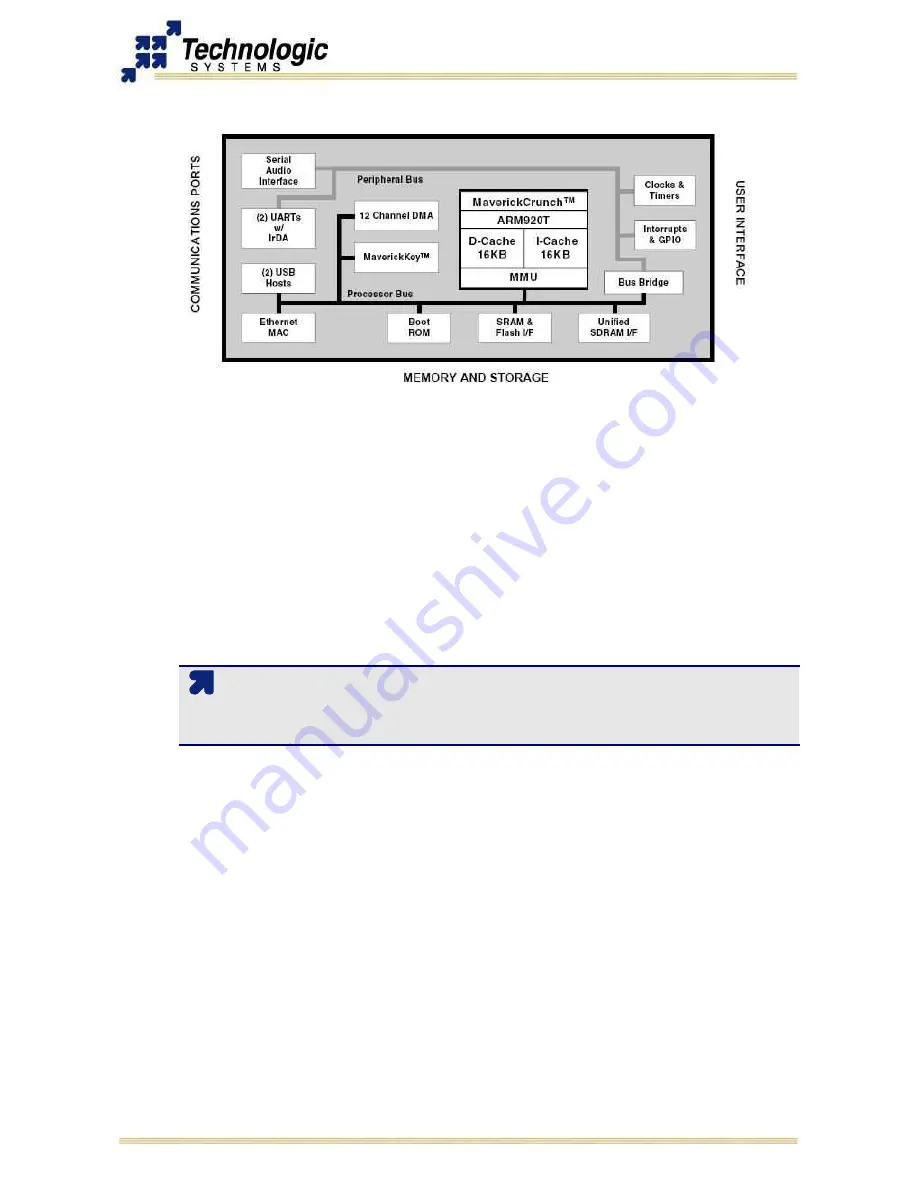
TS-7400/TS-9441 MANUAL
HARDWARE COMPONENTS
Picture: Cirrus EP9302 Block Diagram
EP9302 key features include:
✔
ARM (32-bit) and Thumb (16-bit compressed) instruction sets
✔
32-bit Advanced Micro-Controller Bus Architecture (AMBA)
✔
16 kbyte Instruction Cache with lockdown
✔
16 kbyte Data Cache (programmable write-through or write-back) with lockdown
✔
MMU for Linux®, Microsoft® Windows® CE and other operating systems
✔
Translation Look Aside Buffers with 64 Data and 64 Instruction Entries
✔
Programmable Page Sizes of 1 Mbyte, 64 kbyte, 4 kbyte, and 1 kbyte
✔
Independent lockdown of TLB Entries
For further information about the EP9302 features, refer to the
EP9301 User's Guide
.
Note
The EP9302 is identical silicon to the EP9301 except it is rated to run at 200 Mhz,
instead of 166 Mhz. The available
EP9301 User's Guide
can still be used as the
main reference manual.
MMU
The EP9031 features a Memory Management Unit, enabling high level operating systems
such as Embedded Linux and Windows CE to run on the
TS-7400
. In the same way, the
Linux TS-Kernel takes advantage of the MMU functionality.
The MMU is controlled by page tables stored in system memory and is responsible for
virtual address to physical address translation, memory protection through access
permissions and domains, MMU cache and write buffer access. In doing so, software
applications can access larger "virtual" memory space than the available physical memory
size, allowing multiple programs to run and use the system memory simultaneously.
For further information about the MMU functionalities, refer to the EP9301 User's Guide.
Interrupts
The EP9302 interrupt controller allows up to 54 interrupts to generate an Interrupt
Request (IRQ) or Fast Interrupt Request (FIQ) signal to the processor core. Thirty-two
hardware priority assignments are provided for assisting IRQ vectoring, and two levels are
provided for FIQ vectoring. This allows time critical interrupts to be processed in the
shortest time possible.
© May, 2010 www.embeddedARM.com 25















































